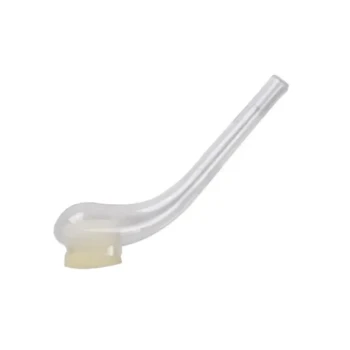The primary precautions when feeding pollen are to ensure it is free from pathogens and chemical contaminants, and to time the feeding correctly. Feeding pollen from unknown hives risks introducing devastating diseases like American Foulbrood, while poor timing can create a large population of bees that the environment cannot support, leading to starvation.
Supplemental pollen feeding is a powerful tool to stimulate colony growth, but its success hinges on one non-negotiable principle: sanitation. The risk of introducing disease from outside pollen sources is so severe that using a high-quality pollen substitute is almost always the safer and more responsible choice.

The Purpose of Supplemental Feeding
Before feeding, it is critical to understand your goal. Supplemental protein is not a routine meal; it is a strategic intervention used to manipulate colony population dynamics for a specific purpose.
Stimulating Early Brood Rearing
The most common goal is to encourage the queen to lay eggs early in the season, typically 4-6 weeks before the first major nectar flow. This ensures a massive forager workforce is ready to capitalize on the available resources, leading to a larger honey harvest.
Supporting Colonies During a Dearth
In periods with no natural pollen available (a "pollen dearth"), supplemental feeding can prevent the colony from shrinking. A lack of protein forces the bees to stop raising brood, which can weaken the hive significantly.
The Critical Risk: Pathogen Transmission
Using natural pollen collected from outside your own apiary is the single greatest risk in supplemental feeding. Pollen is a primary vector for diseases that can destroy your hives.
The Threat of American Foulbrood (AFB)
AFB is a fatal bacterial disease for bee larvae. Its spores are incredibly resilient and can remain viable in old equipment and bee products—including pollen—for decades. Feeding contaminated pollen to a healthy hive will lead to an infection that requires burning the entire colony and its equipment.
Pesticides and Other Contaminants
Bees forage over a wide area and can collect pollen contaminated with pesticides, herbicides, and fungicides. Concentrating and feeding this pollen back to your bees can introduce these toxins directly into the brood food chain, harming larvae and weakening the colony's overall health.
Understanding the Trade-offs and Safer Alternatives
Given the risks of outside pollen, you must weigh the benefits against the potential for catastrophic loss. Fortunately, safer and more practical options exist.
Pollen Substitutes
These are commercially produced powders designed to provide the protein and nutrients bees need. They are typically made from soy flour, brewer's yeast, and other protein sources, mixed with vitamins and minerals. Substitutes are disease-free and are the standard choice for most beekeepers.
Using Pollen from Your Own Hives
The only safe source of natural pollen is pollen collected from the exact same hive you plan to feed it back to. This avoids cross-contamination between colonies. This pollen should be trapped, frozen immediately to kill pests like wax moth eggs, and stored frozen until use.
The Pitfall of Poor Timing
Feeding pollen stimulates brood rearing, which creates a large population of young "nurse bees." If you feed too early, these bees will emerge before there is nectar to collect. This large population will quickly consume the hive's honey stores, potentially leading to starvation before the nectar flow begins.
Making the Right Choice for Your Goal
Your decision should be based on your specific goal and your tolerance for risk.
- If your primary focus is maximum safety: Use a high-quality commercial pollen substitute. This completely eliminates the risk of introducing pollen-borne diseases.
- If your primary focus is boosting spring buildup: Begin feeding pollen substitute patties 4-6 weeks before your area's main nectar flow. This aligns the peak population with peak resources.
- If you are considering using pollen from an unknown source: Do not use it. The risk of introducing American Foulbrood or chemical contaminants is far too high.
Ultimately, treating supplemental protein as a precise tool, not a casual treat, is the key to building stronger and more productive colonies.
Summary Table:
| Precaution | Key Action | Purpose |
|---|---|---|
| Sanitation | Use only pollen from your own hive or a commercial substitute. | Prevents introduction of diseases like American Foulbrood. |
| Timing | Feed 4-6 weeks before the main nectar flow. | Aligns colony growth with available resources to prevent starvation. |
| Source Safety | Avoid pollen from unknown or external hives. | Eliminates risk of chemical contaminants and pathogens. |
Ensure your beekeeping operation thrives with safe, reliable supplies from HONESTBEE. We provide commercial apiaries and distributors with high-quality, disease-free pollen substitutes and beekeeping equipment to support healthy colony growth and maximize honey yields. Contact us today to discuss your wholesale needs and protect your investment.
Visual Guide

Related Products
- Professional Queen Catcher and Introduction Queen Cage
- Premium Traditional Copper Bee Smoker with Bellows
- Stainless Steel Honey Bee Smoker Hive and Honeycomb Smoker for Beekeeping
- Professional Spring-Action Queen Catcher Clip
- Heavy Duty Cowboy Beekeeper Hat with Visibility Veil Outdoor Professional Beekeeping Protective Gear
People Also Ask
- Where should the queen bee's cage be placed in the hive? Maximize Acceptance in the Brood Nest
- Why is it difficult to purchase queens during the production season? The Seasonal Demand Spike Explained
- Are queen cages reusable? Yes, with proper cleaning for sustainable beekeeping.
- What is the procedure for collecting semen from subsequent drones? Master the Expel-to-Connect Method
- Why is the candy in shipping cages important? Ensure Your Queen Bee is Accepted by the Hive



















